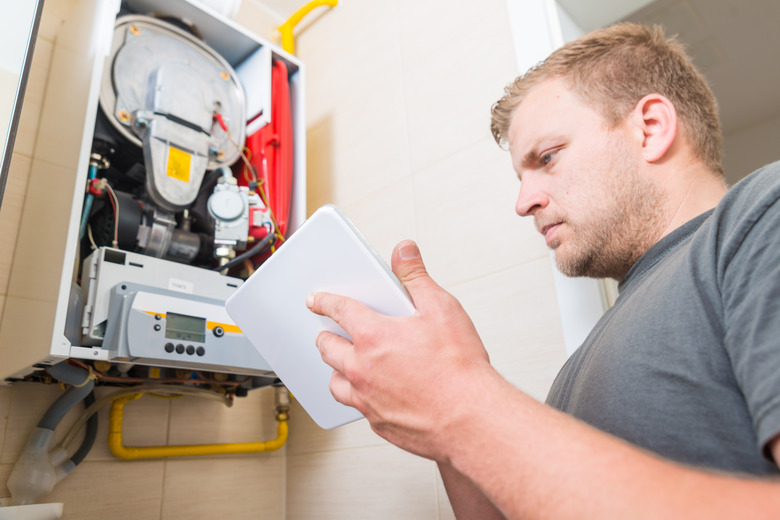How To Tell If A Thermocouple Is Bad
If you have a gas water heater, gas wall heater or any other appliance with a gas burner that needs to cycle on and off, there's a thermocouple in your life. It's a usually reliable device that works in conjunction with a standing pilot, which is the little flame that, like the Olympic torch, burns while the appliance is in operation.
The job of the thermocouple is to keep the pilot lit. It does this by sending a tiny electric current to a sensor on the gas valve signaling the valve to stay open. The thermocouple can do this because, in its probe, it contains two different metals, and a voltage is generated when one of them is heated. This is the result of a phenomenon known as the Seebeck Effect.
Nothing lasts forever, and when the thermocouple wears out, the pilot won't stay lit and your appliance won't work. The pilot can go out for a number of other reasons, however, so if you're having trouble getting the pilot to stay lit, the thermocouple may not be at fault. Here are a few ways to pinpoint a faulty thermocouple as the culprit.
The Pilot Lights But Won't Stay Lit
The Pilot Lights But Won't Stay Lit
If a water heater pilot won't light at all, the thermocouple probably isn't the problem. The procedure for lighting a standing pilot always includes lighting the flame, then manually holding in the gas valve to keep the flame burning and give the thermocouple time to heat up. If you can't get the flame to light at all, and you're sure the gas is on, there's probably an obstruction in the pilot tube.
If the flame lights and goes out when you release the gas control knob after holding it in for the recommended 20 to 30 seconds, that's the sign of a thermocouple malfunction. Before jumping to the conclusion that the thermocouple is at fault, look at the pilot flame. If it appears small and has an orange-yellow tinge, it may be too weak to heat the thermocouple. The likely problem, again, is an obstruction in the pilot tube.
Try This Before Blaming the Thermocouple
Try This Before Blaming the Thermocouple
The pilot flame must be big and hot enough to heat the thermocouple to the temperature it needs to generate enough voltage to signal the gas valve. Sometimes the problem is simply that the thermocouple probe is too far from the flame. You can eliminate this possibility if there's enough room for you to reach in your hand and reposition the probe closer to the flame. You can also eliminate obstructions in the pilot tube as a possible cause by turning off the gas, unscrewing the pilot tube from the gas valve and blowing compressed air from a can through the tube. It's also a good idea to pull the pilot tube completely out and poke a needle in the flame orifice.
Test the Thermocouple
Test the Thermocouple
Gas appliance thermocouples have a standard design. A gas water heater in Boise, Baton Rouge, Buffalo or Boston uses a thermocouple that includes a probe attached to a copper tube that screws into a port on the gas valve. If the thermocouple is working, you should be able to measure 30 to 40 millivolts of voltage at the connection end of the tube when the pilot flame is on. You can test this yourself using a multimeter, but you may need a helper to keep the pilot flame burning while you do it.
Start the test by unscrewing the thermocouple from the gas valve. Set the multimeter to read millivolts, then start the pilot and have your helper hold in the gas control knob to keep it burning. After about a minute, when you're sure the probe has gotten hot, place one lead on the shaft of the thermocouple and the other lead on the connector. If the reading is less than 25 millivolts, the thermocouple is bad and needs to be replaced.
